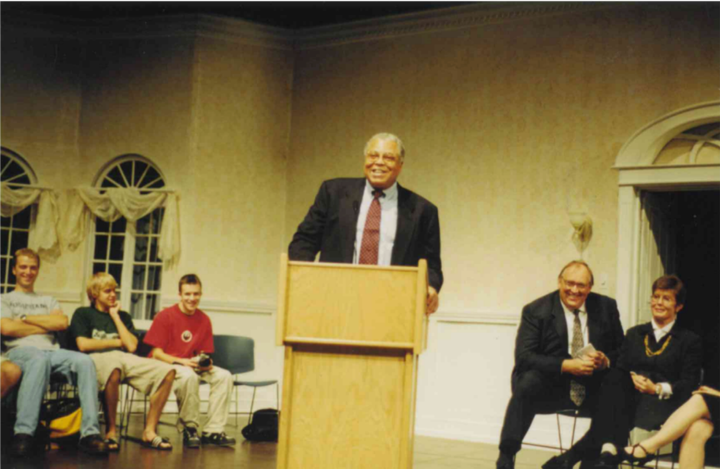From here to eternity: students steam in caf line
REBEKAH TUCHSCHERER
rjtuchscherer16@ole.augie.edu
It is 12:20 p.m. in the Morrison Commons. All is silent.
Just ten minutes later, students flood through two sets of double doors, coming from their 11 a.m. classes, searching for a bite to eat before studying and afternoon lectures.
But before grabbing a plate, they will have to wait in line.

Due to an increase in overall enrollment, the line into the Ordal Dining Hall has grown substantially during peak meal times, forcing students to wait five to ten minutes before entering.
According to head of dining services Damian Lewis, the number of total meal plans has increased from 1197 in the spring of 2017 to 1260 in 2018—an addition of 63 plans. Many of these individuals include freshmen and sophomores who are required to have an unlimited meal plan.
“The underclassmen, their classes all end at kind of the same time,” said Lewis. “We get hit with anywhere from 200-300 people wanting to eat at one time, and of course that’s going to develop lines.”
Sophomores Erica Dorsett and Maggie Dow have experienced the long lines eating lunch together at the dining hall on Tuesdays and Thursdays after their respective 11 a.m. classes.
“You usually have to go half an hour later than when people normally go, like 12:30 p.m.,” Dow said.
Currently, students are required to swipe their Augustana ID before entering the dining room, a process that takes three to five seconds as the information transfers from the cash register to the server to verify the individual’s meal plan status and return.
Lewis has been working with Augustana Information Technology Services and CardSmith, the campus ID card system, to minimize the delay.
“Right now, we’re trying a bit of a work around and have added a second tablet to the cashier station to try and run the swipes, [as] that seems to run it through a little bit faster,” Lewis said. “We’re still working on the main problem, but we’re also doing something that can help us along the way.”
Lewis said that a secondary problem could arise as the lines shift from outside to inside the dining hall.
“If we let all 200 people into the dining hall immediately, we’re going to have another problem with lines at the stations,” Lewis said. “The line servers won’t be able to keep up. Being able to judge the food and how much food needs to be made when is also going to be thrown off because we continually make food as we go.”
As member of the Student Union Project Committee (SUP), Lewis has worked with administrators and students to discuss student dining needs and the steps necessary to meet them as the project planning progresses.
The ASA has also been working closely with Lewis and Sodexo, voicing student concerns in creating temporary solutions to the problem, such as opening up the 3-1 Room to provide a larger seating area.
“This is something that they need to deal with during the renovation of the Commons,” Jonas Gjesdal, ASA senator the Housing and Dining Committee chairman, said.
“Yes, we can make the best out of the current situation, but there needs to be a whole new system there. Everything needs to be renovated if this population boom continues.”
Waiting in line outside the dining hall, senior Shay Norris said, “You know, it’s a little inconvenient, but we all take our turn to eat, and it’s alright.”



